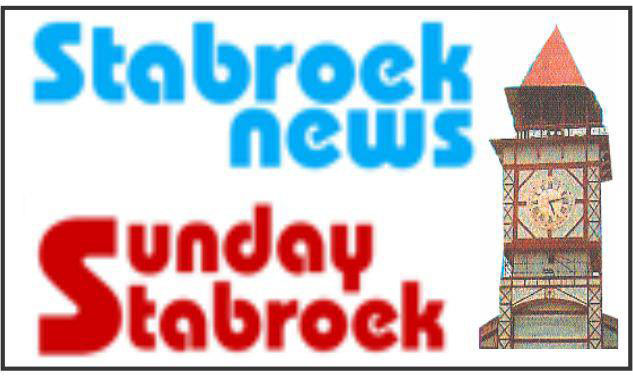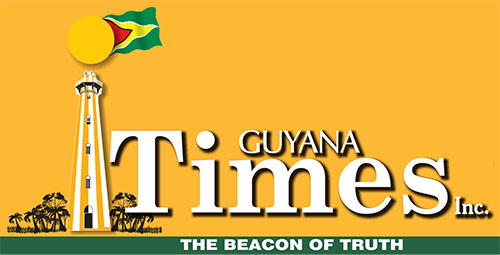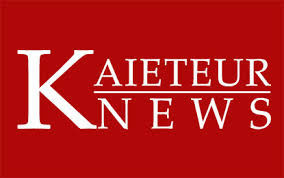Research Article Open Access
Vineet Kaul
Department of Communication and Media, DA-IICT University, Near Indroda, Gandhinagar, Gujarat, India
In Asian countries media freedom is a controversial issue, on one side, right to information and freedom of expression is provided for, on the other side media regulations and press laws are ready to curb the media freedom. New media often get involved in struggles for new freedoms. This article aims to discuss issues of new media in the governance of freedom of press.
The Internet is an indispensable source of information today. At the same time, the freedom of new media – like other media – is dynamically related to the overall societal context as regards press freedom dispensations. Old and new media realms do have different issues, and there are particular matters for developing countries. But there is also much in common between old and new media, and between developing and developed countries, and all have interdependent interests in a free environment for journalism. With the creation of various types of new media, the Internet has become the broadest gateway and platform of spatial knowledge to interaction, and even turns to be the formation of a far and wide public field. The emergence of new media which breaks the original concept and rules of traditional media communication makes expression of freedom of the press more influential. There are brand new challenges to media freedom. The Internet, social media and blog posts – these are among the tools being used so creatively, especially by the vanguard of young people, to help spur change in their societies.
Press organisations are vibrant and restive institutions which provide platforms for power negotiations in the public space. They set the stage for public discourse on popular issues and enjoy wide readership. The principal features of press organisations include critical independence, democratic constructiveness and commercial viability. The state’s fear of the power of press organisations and their immense contributions to the defence of fundamental human rights often serves as justification for censorship. Although freedom of the press is guaranteed in the First Amendment, to what extent that right is protected has been battled in court and debated in public opinion for more than 200 years.
Historically, “press freedom” is known as such because it was printers and newspapers that fought for this right which nowadays refers to media in general. It is a right that goes beyond an individual’s freedom of expression, much as it is also built upon that right. In many places, it is privately-owned newspapers that continue this quest or help preserve victories against powerful forces who are sensitive to certain information becoming public. The question to be addressed in this paper therefore is the extent to which the battleground of press freedom today has a new frontier that incorporates cyberspace. This also entails taking stock of the main forces in the realm of new media (besides newspapers’ presence there), and indeed whether old and new media are even on the same side in respect of this new arena. There are also questions of tools, tactics and issues in the contest for and against “press freedom” in this non-traditional environment. What, in short, are the new battles being fought, how do they affect “old” ones, and vice versa? And how does all this relate to “developing countries”?
In India, media is always misused by political parties for the purpose of misrepresentation of many politicians particularly in south India, where they have started private channels either in their name or in their relatives’. Jaya TV, Surya TV, etc. are good examples. Advertisements of India Shining and spiritualistic image making of political leaders, are very common practices all over Indian media. There are at least three major media traditions in modern India: that of a diverse, pluralistic and relatively independent press; the manipulated, misused, state-controlled radio and television; and that of many autonomous, small media outfits of various subaltern groups and their organisations. These traditions are so diverse, their histories, functions and roles in society and politics so divergent, and the rules of the game pertaining to them so radically different, that any attempt to speak in a generalised way of the ‘media’ in India today and locating it in ‘democracy’ appears far-fetched.
The face of Indian media has been fast changing with the growth of the Internet, the phenomenal rise of satellite and cable networks, the continuing growth of regional press, despite various challenges, and the blurring of lines between news and entertainment. But there is a sort of ‘crisis’ in the present media due to processes of commercialisation, mercerisation and commoditisation. This has led some to present a pessimistic view of the media, to emphasise the ascendancy of ‘infotainment’ over ‘serious’ reportage and analysis of politics. It is also often remarked that the quality of ‘serious’ political journalism is steadily declining, with a dilution in its substantive political content to the detriment of the democratic process. An opposite view asserts not that there is too little serious politics in the media, but too much. This is seen as a kind of information overload that bores audiences and diminishes public interest. Still others have argued that media is an elitist bourgeois construct, reflecting essentially bourgeois interests and values and conditions of existence and can thus never serve the genuine interests of the people as a whole. Despite its democratic façade, it is said that the media remains exclusive, and people as a whole feel no real involvement in a process which appears to give them power but in reality does not.
In the last decade of the previous century, it appeared that the new media communication system developed one hundred years ago was coming to an end, while a new system, whose characteristics and nature are not yet quite clear, is nevertheless certainly coming into being. When the automobile was invented, many thought it was just a horseless carriage. They did not realise that a new transforming feature of the culture of the entire twentieth century had arrived along with the reality of these four-wheeled motorised inventions. The same question can be asked now: what is the new media technology culture that is coming with the computer and computerised information, and how are we to live with it? The year 2010 firmly established the role of social networks and the Internet as mobilisation and news transmission tools. In 2010 alone, 250 million Internet users joined Facebook and by the end of the year, the social network had 600 million members. In September that year, 175 million people were Twitter users – 100 million more than in the previous year.
A remarkable feature of the latter half of the twentieth century is the phenomenal growth rate of new communication technology. This rapidly-evolving technology ensures a quick and instantaneous information flow across the world while extending the communication pattern in different societies. New technologies in telecommunications, broadcasting and printing have also created greater opportunities for information flow among the world community. At the microcosmic level, the new technologies of satellite broadcasting, electronic printing, cable networks, telex, teletext, videotext systems, facsimile, digital telephony, telematics and video are enhancing access to multifarious communication sources and messages. There are ample manifestations that the next century will be dominated by new communication technology that could accentuate the technological and information gap between the industrialised world and much of the developing world, especially the poor societies at the periphery of the communication revolution. However, the new technologies are gradually creeping into many regions, and urbanised areas, particularly capitals of respective countries and increasingly exhibiting signs of the technological revolution.
Despite the revolutions of 1989, some eighty-two different kinds of censorship are still practiced worldwide. Censorship takes many forms, from murdering journalists to putting highly sophisticated forms of pressure on reporters and media managers. Altogether, systematic pressures induce a high degree of self-censorship which is harder to detect than outright blue-penciling of articles before publication or broadcasting. Censors operate more or less openly, depending on the degree of outright centralising of government and of state control over mass communications. The revolutions of 1989 in Central Europe demonstrated the intimate connection between the systems of governance and the uses of mass communication for retaining or – as we saw that year – undermining highly centralised governments and societies.
The new is new. The technologies that have emerged in recent years, principally but not exclusively digital technologies, are new. They do new things. They give us new powers. They create new consequences for us as human beings. They bend minds. They transform institutions. They liberate. They oppress. It is not difficult to identify the utopian, nor indeed the dystopian, in all of this. It is not difficult either to see how often the desire for or fear of change overwhelms its analysis. It is easy to be seduced by the simplicity and the significance of novelty. It is easy to misread the signs. Novelty is, however, at this point, our problem. To ask the question ‘what is new about new media?’ is, of course, to ask a question about the relationship between continuity and change; a question that requires an investigation into the complexities of innovation as both a technological and a social process. But it is a question which also requires an interrogation of some fundamental presuppositions in social science as well as a confrontation with some of its enduring paradoxes.
These new technologies have great potential to democratise the countries where they are introduced and are permitted to function. Indeed, the Revolutions of 1989 in Eastern Europe, like that in the Philippines in 1987, were partly motored by these new communications technologies. The peoples’ revolutions were inspired, informed and guided by the use of television and the newer media. A similar phenomenon under way in China in 1989 was aborted by overwhelming military force. There is certainly value in avoiding over-radical dichotomies between old and new media, but it is also important to look at the similar and the dissimilar, the convergences and the clashes, between the two realms of media. In many developing countries (democratic or not), press freedom for the old media remains the primary issue simply because they are still the most extensive vehicles for journalism.
New media technologies are changing the panorama of traditional media and are being hastily adopted world-wide to join global communications and catch up with advanced countries in scientific and economic development. Many of the traditional means of delivering information are being slowly superseded by the increasing pace of modern technological advance. Almost every conventional mode of media and information dissemination has a modern counterpart that offers significant potential advantages to journalists seeking to maintain and enhance their ‘freedom of speech’. New media technologies have been described as tools to strengthen and weaken social democratisation, and to liberalise and control information flow. Excessive generalisations like techno-positivism, techno-neutralism and techno-negativism often fail to take into account various differences in the social environment where such technologies operate. As Sussman noted, the nature of new information technologies entails pluralism, diversity and two-way interaction and thus reduces the potential for monolithic, centralised information control and direct or self-imposed censorship. If democratic communications are the basis of any democratic culture and political system, changes in such communications, brought about by new technologies, should also be expected to affect a country’s culture and political systems. Today, many governments the world over are worried more than ever about the political consequences of the new media penetrating their countries. They give a strong warning over the widespread use of new electronic media, especially satellite TV broadcasting and insist that if we do not act resolutely and effectively now, the US and other Western countries may achieve their goals of disintegrating by trans-border broadcasting and other new media technologies, just as they did to the USSR and other Eastern European countries.
It is the further premise of the writer that these new media blitzes will increasingly influence all countries, no matter how centralised their present form of governance. This suggests that there will be many more political revolutions across the planet attributable in large measure to the new communications technologies. Changes will occur within each nation large or small, rich or poor, of whatever present political and social orientation. These changes, moreover, will not be wrought in isolation. The new communications technologies will be most productive when they are joined together in a tissue of networks, both domestic and international. This will be the Integrated System of Digital Networks (ISDN).
ISDN, like the Agricultural and Industrial Revolutions before it, will not automatically enlist peoples or nations. Technology in itself cannot create new polities, but new communications technologies will become essential to economic and social development. Consequently, they will drive politics and speed up democratisation. Political will is still needed to ensure such development and avoid the disadvantages of the new technologies; in brief, to avoid the recentralisation of political systems through the misuse or exploitation of the networking aspects of ISDN. To skirt that negative possibility, a new set of regulatory rules will be needed nationally and internationally. The great challenge in the thirty years ahead will be the creation of regulatory systems founded on democratic objectives – equitable for all citizens within countries; and for all countries, large or small, rich or poor. Regulators would replace censors in order to maintain pluralistic news and information systems within and between countries.
Freedom of the press was not created by the Founding Fathers for the convenience of either the politicians or the press; it was created as a guarantor and protector of an informed citizenry, without which we have no democracy. The history of communication has shown, the most fundamental conflict in communication often takes place between the outlook of the established authorities (responsible for maintaining the current order) and media demands for unrestricted freedom of expression. The history of mass communication, in this sense, has evolved around conflicts between the government and the media. As revealed by many cases, advancement in media technologies, providing greater public space and new ways to break through information controls, often leads to new rounds of conflict. New media technologies here are referred to as technological progress in the fields of mass communication since the 1980s. As Wilson Wizard, Jr., put it, they include digital radio broadcasting, multi-media computers, wireless cable systems, CD-ROM laser disks, direct broadcast satellites, advanced facsimile machines, intelligent telephones, consumer computer networks, portable electronic newspapers, and national videotext services (Wizard, 1994:2) The revolutionary role of SMS, Twitter and Facebook has succeeded in triggering and sustaining democratic political change in closed and repressive societies. The best part of these new media tools is that they are cheap, universal, pro-democracy, pro-freedom and pro-liberty. Today’s technology also gives the media powerful new tools for intrusion into private lives. Cameras are smaller and easier to hide. Conversations are easily recorded surreptitiously. Computers and the Internet provide the ability to rummage through the closets of your life in ways that have never before been possible. Technologies are known to affect various aspects of human life even though their invention may originally have had different aims. This is especially true of communication technologies, which often result in changes which are never part of the intention of their inventors. Indeed, not since the printing press was invented and the Word became free locally has such a swift transformation of the force of the Word taken place so globally. An era of citizen journalism and free media is upon us and this will have far-reaching consequences for democracy and accountability.
This article has been considerably edited on account of limitations of space.









